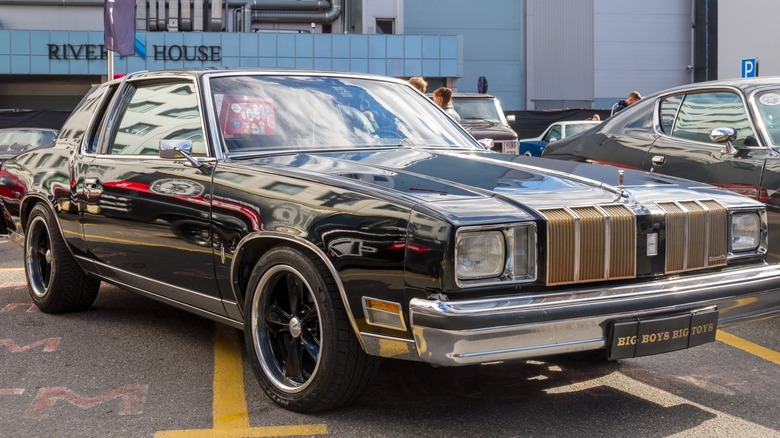
Oleg Mirabo/Shutterstock
By Ron King/
Oldsmobile had a history of innovation in the automotive industry ranging from the leading-edge design of the 1949 Oldsmobile 88, to the overhead cam Rocket V8 engine and the highly collectable Olds 442. So how can an automaker with extensive experience and success develop one of the worst engines ever put in a production vehicle? While it must have seemed like a good idea at the time, the decision to install a (poorly thought out) diesel-converted Oldsmobile 350 engine (not to be confused with the famed Chevrolet 350 small block) into the 1978 Oldsmobile Cutlass ultimately flopped.
When the diesel Olds Cutlass rolled onto dealership lots for the 1978 model year the future looked bright. The 350 cubic-inch diesel engine offered better fuel economy at 21 mpg compared to the gas engine’s 15, and, at the time, diesel was less expensive per gallon. Consumers didn’t balk at the extra $800 the diesel engine option added to the Cutlass’ $5,033 base MSRP, surely thinking the fuel savings would pay off.
The rush to deliver Oldsmobile’s 350 V8 diesel engine resulted in numerous problems, contributed to the flop of diesel-powered passenger cars in general, and the ultimate demise of the Oldsmobile brand. While the diesel engine featured a stronger block, several important design aspects remained unchanged or overlooked leading to a high rate of engine failures and breakdowns. These issues were compounded by a lack of qualified diesel engine mechanics in Oldsmobile dealer service centers.
The Oldsmobile diesel 350’s rush to production
The 1970s saw several challenges for automotive engine designers. In January of 1973, the Environmental Protection Agency (EPA) proposed reductions for gasoline lead content to 1.25 grams/gallon over a five-year period. This measure aimed to facilitate the use of catalytic converters, mandated for new cars starting in 1975. The 1973 OPEC (Organization of Petroleum Exporting Countries) embargo led to limited supplies of gasoline and rising prices at the pump. In 1975, Congress passed the first CAFE (Corporate Average Fuel Economy) standards in an attempt to «reduce energy consumption by increasing the fuel economy of cars and light trucks,» according to the U.S. Department of Transportation.
While CAFE standards are often updated and cause minimal automotive industry disruption today, the combination of factors hitting the automotive industry in the 1970s left little engineering bandwidth to dedicate toward innovation. As a result, Oldsmobile, and GM, took advantage of a loophole exempting diesel engines from the same emission and CAFE standards as gas engines. However, instead of developing a diesel engine for its passenger cars from scratch, the «new» engine used the same design as Oldsmobile’s existing gas-burning 350 V8.
[Featured image by Greg Gjerdingen via Wikimedia Commons | Cropped and scaled | CC BY-SA 2.0]
The unreliable Olds 350 diesel engine
Other than the 350-diesel engine’s stronger block, Oldsmobile used as many gas-engine parts as possible. One major mistake was using the same torque-to-yield head bolts, designed to stretch when torqued properly, which work great on gasoline engines. However, the increased compression of the diesel causes further stretching, often breaking the bolts completely. The resulting head gasket failures led to leaking fluids, compression loss, and hydro-locking when coolant flooded the cylinder. Almost as devastating as the head gasket issue was the decision to omit a water separator in the diesel engine’s fuel system until 1981. Low quality diesel containing trace amounts of water degraded the engine’s high-pressure fuel injectors.
General Motors stablemate Chevrolet also used the Olds diesel 350 in its diesel-powered Chevrolet Caprice and 5.7-liter diesel Monte Carlo. Chevrolet recovered from the fiasco but not without encountering a bevy of lawsuits that eventually led to the creation of Lemon Laws aimed at holding automakers accountable for poor quality automobiles. GM redesigned the 350 cubic-inch diesel V8 and doubled-down on its diesel passenger car offering with a «much-improved diesel V6» option in 1981, per Motor1. However, the first-round GM diesel car flop was enough evidence for most consumers to avoid the technology in general.
[Featured image by Don O’Brien via Wikimedia Commons | Cropped and scaled | CC BY-SA 2.0]